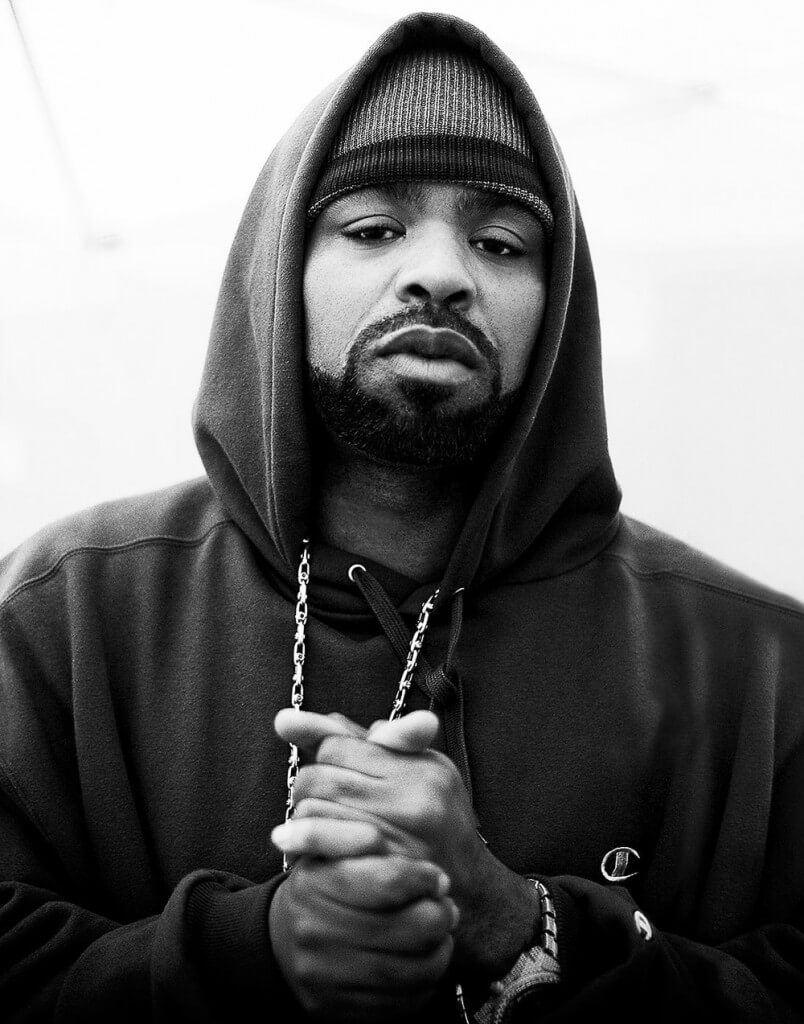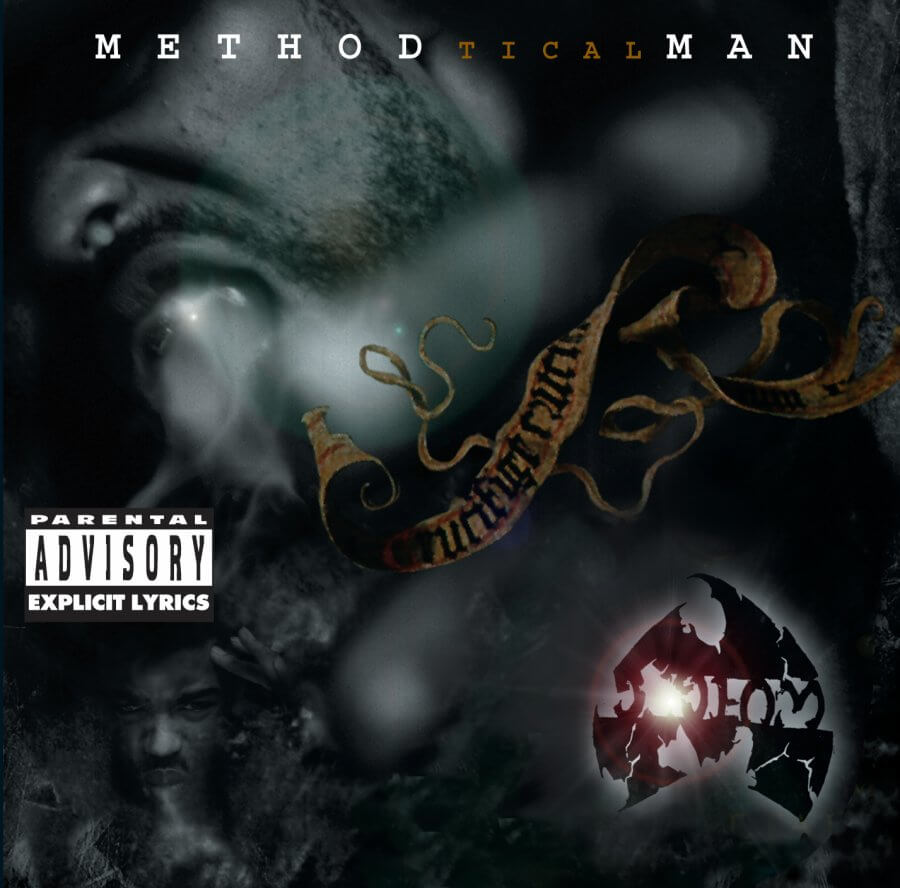Sporting a mouth full of gold teeth and an arsenal of memorable verses, Method Man is one of the most charismatic figures in rap today. Also known as Meth, Tical, Johnny Blaze, Hott Nikkels, MZA, and Iron Lung, the engaging MC has starred on hit singles and albums as a founding member of the Hip Hop supergroup Wu-Tang Clan, solo, with current partner-in-rhyme Redman, and as a guest rapper on countless projects.
Method Man grew up as Clifford Smith, a youth who was shuttled between a delinquent father in Long Island and a mother on Staten Island, New York. In fact, Staten Island — later renamed “Shaolin” by the Clan — was where he met the men who would eventually become the Wu-Tang Clan. Smith grew up in the Park Hill projects with his mother and two sisters, one younger, one older. At various times he has claimed to have dropped out of high school in the ninth and eleventh grades, and sold and experimented with drugs. “Reality smacked me in the face early. That’s why I don’t like to talk about my childhood,” Meth told Rolling Stone in late 1998. He then added, “I don’t ever want anybody to feel sorry for me because of the way I came up. There are a lot of people who have it a hell of a lot worse than me.”
During those years, Smith rapped and hung out with Robert Diggs (Prince Rakeem, aka the RZA) and his cousins Gary Grice (the Genius/GZA), and Russell Jones (Ol’ Dirty Bastard). Years later, after Prince Rakeem and the Genius had suffered setbacks in the recording industry in the early ’90s, the two gathered up Meth, Ol’ Dirty Bastard, and newcomers Ghostface Killah, Inspectah Deck, U-God, and Raekwon to form the Clan. The eight pooled their resources and recorded a single, “Protect Ya Neck/After the Laughter,” on Wu-Tang Records in 1992. It sold 15,000 copies, leading to a unique deal with Loud Records, then a fledgling rap imprint for RCA. The label signed the group, while allowing its members to sign separate solo deals. “We have too much talent,” Meth later observed. “You can’t sign the whole Clan and just give them $300,000. That’s worth one brother right there.”
Loud then repressed the first single and added Meth’s “Method Man” as the B-side. In December of 1993, the Wu-Tang Clan released their full-length, Enter the 36 Chambers. The now-classic album spawned several hit singles, including “Protect Ya Neck,” “Wu-Tang Clan Ain’t Nuthin to F— Wit/Can It Be All So Simple” and “C.R.E.A.M./Da Mystery of Chessboxin’,” which found Meth singing the memorable chorus “Cash Rules Everything Around Me/ C.R.E.A.M. get the money/ Dollar dollar bill y’all!”
Over the course of 1994, Enter the 36 Chambers went on to sell a million copies. By then, however, Method Man had released his first album, Tical. Despite its dark, grimy sound, Tical entered the Billboard charts at No. 4 and eventually gained platinum status. Three singles were released from it, “Bring the Pain (which inspired the Chris Rock HBO special),” “Release Yo’ Delf” and “You’re All I Need to Get By/I’ll Be There.” The third single, a remix of the album version featuring Meth and Mary J. Blige, became a crossover smash in 1995, charting at No. 3 and winning accolades from the New York Times as “the song of the summer.”
Thanks to his gravelly voice, ultra-cool persona and knack for metaphor-laden rhymes, Method Man quickly became one of the most popular MCs of the mid-’90s. He appeared on a plethora of tracks by other artists, including those of the Notorious B.I.G. (“The What”), Shaquille O’Neal (“No Hook”), and Boyz II Men (“Vibin'”). In August of 1995, he teamed up with fellow Def Jam artist Redman for “How High,” a surprise hit that dented the Billboard Top 20.
Throughout 1995 and ’96, Meth continued to appear on solo efforts by Clan members Ol’ Dirty Bastard, Raekwon (“Ice Cream”), Genius/GZA (“Shadowboxin'”), and Ghostface Killah. On Raekwon’s album, Only Built 4 Cuban Linx … he assumed the name “Johnny Blaze,” a concept that became a catchphrase, the title of a magazine (Blaze), and even a clothing line, much to his chagrin. “I started it and mad heads are using it and ain’t payin’ homage,” the rapper later complained.
All of this activity, coupled with the Wu-Tang Clan’s own international fame, led to inflated, unrealistic expectations for the Clan’s second album, Wu-Tang Forever. Though more than 600,000 copies of the double-CD were snapped up in its first week alone, its abstract, philosophical themes were met with a mixed response. Method Man, for one, felt the 1997 effort was ahead of its time. “[People] didn’t understand what I was talking about,” he observed. Nevertheless, Wu-Tang Forever went triple-platinum and earned a Grammy nomination for the Clan.
Following its release, the group attempted to embark on a tour with Rage Against the Machine and Atari Teenage Riot. But after several missed dates, scheduling conflicts, and an alleged altercation with a Loud A&R representative, the group abandoned the sold-out tour, inviting speculation about the group’s behavior in the press and among its fans. Though Method Man later explained to Trace magazine that the promoters were “fronting on the cheddar,” the debacle signaled the beginning of a downturn in the Clan’s popularity.
Method Man’s star, however, continued to rise, as he made tentative steps into acting with bit parts in 187, The Great White Hype, Copland, and Belly. He also continued to guest on other projects, including LL Cool J‘s “4,3,2,1” Redman’s “Whateva Man,” and Jayo Felony’s “Whatcha Gonna Do.” In November of 1998, Meth finally released the follow-up to Tical, Tical 2000: Judgement Day, which debuted at No. 2 and promptly went platinum.
In 1999, Method Man parlayed his growing friendship with Redman into a joint appearance on Jay-Z’s Hard Knock Life tour, which set box-office records and grossed $18 million. During the tour, the two wrote a duet LP, America’s Most Blunted (“I’m one of those ’70s babies,” Meth once told High Times), later changed to the more consumer-friendly title Blackout. It was released with much fanfare in late September, debuting at No. 3 on the Billboard charts with impressive first-week sales of over 254,000. Ironically, Garth Brooks bested Meth both times — the country superstar’s Double Live kept Tical 2000 from the No. 1 spot, while his Garth Brooks In … The Life of Chris Gaines, released the same week as Blackout, came in at No. 2.
Meth continues to bless other artists’ records, including Limp Bizkit (“Shut the F— Up”) and EPMD (“Symphony 2000”). He appeared on the 1999 version of the Family Values tour, and, of course, still represents Wu-Tang to the fullest; he also was featured in a comic book, The Nine Rings of Wu-Tang.
After completing the record, Meth refocused on his acting career; in early 2001, he put in a month’s worth of appearances portraying a young gangster on HBO’s gritty prison drama Oz and teamed up with Redman for the Cheech & Chong-styled stoner comedy How High, which hit theaters toward the end of the year, around the same time as the fourth Wu-Tang album, Iron Flag. After numerous delays, the MC released his third solo album, Tical 0: The Prequel, in 2004. He allegedly finished off 20 tracks with RZA as the producer, but Def Jam opted to release a version that featured only one of those cuts. In 2006, Meth issued 4:21… The Day After, which featured appearances from many Wu-Tang members, including a posthumous verse from ODB. A steady stream of mixtapes, live albums, and concert videos appeared before Method reunited with Redman for the 2009 album Blackout! 2.
On August 21, 2015 Method Man’s fifth solo-studio album The Meth Lab was released.



